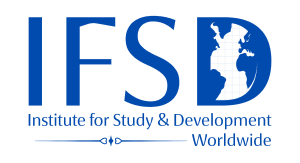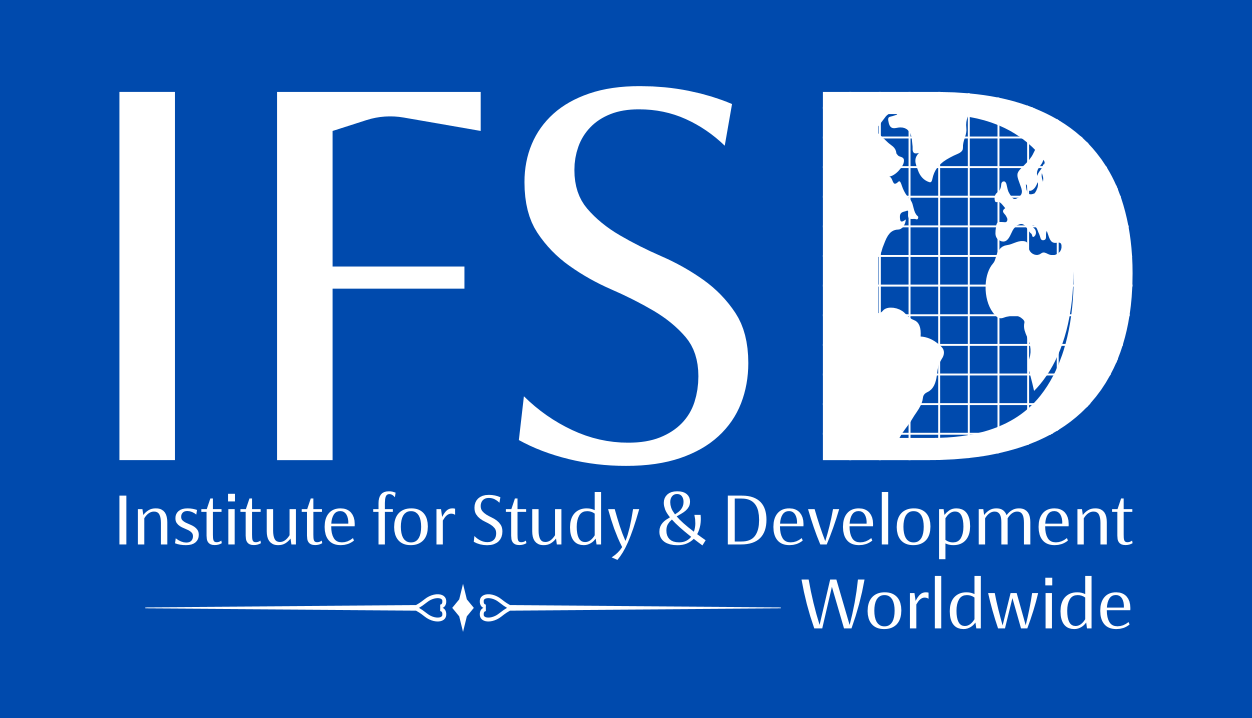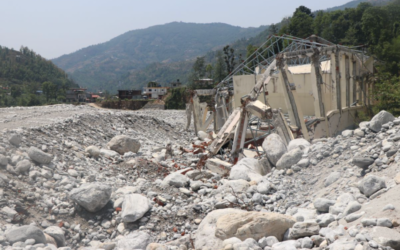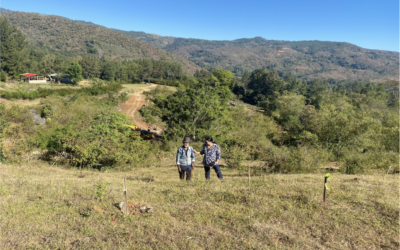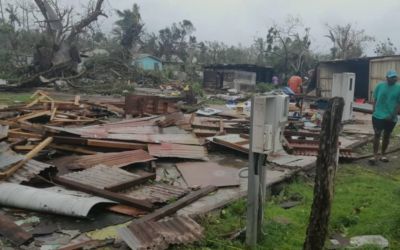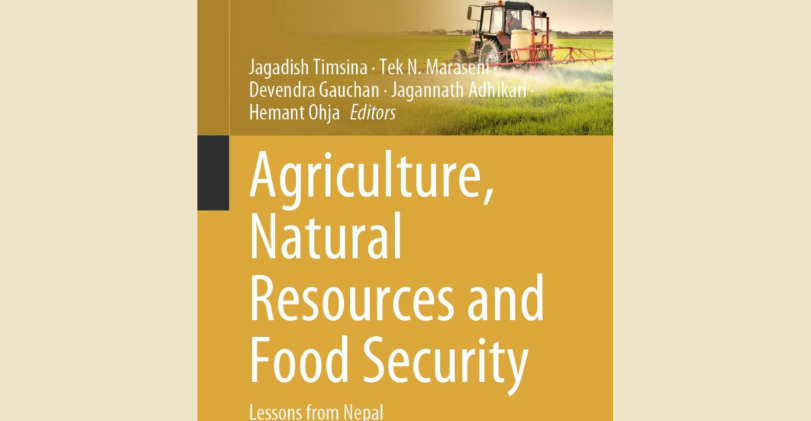
Growing up, I remember my social studies teacher mentioning that Nepal is an agricultural country and about 60% of our population is dependent on the sector for livelihoods. At the same time, our environment, population, and health (EPH) class teacher mentioned that malnutrition and prevalence of diseases are the major health problems in Nepal. So, I always found it perplexing how a predominantly agricultural country was not being able to produce sufficient nutritious food to feed its population.
It was only in grade 11 back in 2015 I began to get a deeper sense of this puzzle. That year, I was assigned a project on understanding the impacts of climate change on agriculture. I realized that along with climate change, poor economic conditions, diverse and often exploitative social structures, and lack of agriculture related technological innovations, all have made it challenging for Nepal to achieve self-reliance on food security.
With my increasing interest in the agriculture sector, my college education further provided me an opportunity to take courses on environmental policy, urban agriculture, and food systems. These courses exposed me, using a holistic lens, to the scientific, economic, cultural, and socio-political dimensions of agriculture and food security in Nepal. This made me realize that the problem of food insecurity in Nepal is multifaceted and way more complex than it appears on surface.
My agriculture and food security literacy is now greatly enhanced by a new book: “Agriculture, Natural Resources and Food Security: Lessons from Nepal” edited by Nepalese agricultural experts Jagadish Timsina, Tek N. Maraseni, Devendra Gauchan, Jagannath Adhikari, and Hemant Ojha living in Australia and Nepal. The book draws on the research of Nepalese diaspora agricultural professionals working in partnership with Nepalese scholars and professionals in Nepal and around the world. There are 24 multi-disciplinary chapters, each contributing to understand recent knowledge on issues and topics related to agriculture, livestock, and forestry systems across the three agroecological regions of Nepal, further also exploring the ways to tackle climate change impacts while considering gender, social equity, conservation and regenerative agriculture practices, and crop modelling.
The book starts with a paradox. Over the past few decades, Nepal has become a country dependent on food imports as the country now imports 80% of the grains we consume (Kumar, 2020). According to Prasai (2020), our agricultural goods import bills crossed Rs 250 billion in 2019-20 which is six times more than a decade ago in 2009-10 when import bill was Rs 44.43 billion. Yet, Nepal still officially describes itself as an agriculture-based economy (Kumar, 2020). This statement is paradoxical as 4.6 million people are still food-insecure in Nepal and the number is only rising (Ministry of Health, 2017).
In 2015, Nepal experienced worrying food shortages in just three months when Nepal-India dispute led to a blockade, causing panic across the country. This blockade is indeed a stark reminder of Nepal’s potential upcoming food shortages if Nepal is to continue with the trend of increasing food imports instead of reducing it. As several chapters in the book show, as food imports soar at an alarming rate to meet growing domestic demands, food insecurity in Nepal is worsening with a looming threat of food crisis. This is very concerning for everyone and there certainly is an urgency to properly understand our food systems to find ways to ensure food security.
With four important themes, the book covers a comprehensive analysis of the food security and the role of agriculture and natural resources. The chapters have been grouped into four key themes: (1) Agriculture, horticulture, and post-harvest management dives deep into how our production for grains and fruit and vegetables continue to be low due to poor post-harvest management, declining soil fertility, lack of quality seed, and poor crop health; (2) livestock and fisheries highlights how despite both industries are growing there are constraints in Nepal being self-reliant due to high production costs, market hurdles, and inefficient institutional policies; (3) forest ecosystems, community forestry, and agroforestry shares insights on the current improvement in community forestry and the untapped potential of agroforestry for climate and economic benefits. and (4) crosscutting topics brings into attention additional scientific, socio-cultural, and political factors that affect our agriculture sector.
Key findings for each are the following:
- Conservative agriculture and regenerative agriculture practices have the potential to eliminate poverty, reduce hunger, and tackle climate change effects through increased production and availability of diversified, safe, and nutritious foods
- Food insecurity is a multifarious problem and access to capital assets are important along with land ownership and education for household level food security
- Despite the benefits of scaling agroforestry systems to protect the environment and its potential to increase farmers’ livelihood, very little research has been carried out to integrate trees in agricultural lands
- Communities are developing new initiatives for a holistic ecosystems-based management of community forestry depending on ecological and economic contexts as they go beyond traditional products like timber and fuelwood
- Nepal follows a ‘sectoral or silo’ approach to development rather than an integrated multisectoral approach
- Women play a critical role in all aspects of farming but with increasing agricultural modernization gender inequality has exacerbated and made the farming communities, particularly women, more vulnerable to climate change
Similarly, key recommendations for each are the following:
- Creating a policy enabling environment through devolution of power and resources to sub-national levels so that communities can come together to integrate their plans for conservation and regenerative agriculture
- Developing policies to provide the ownership of land and animals to the households to help lessen food insecurity problem
- Mapping agricultural lands suitable for growing trees under agroforestry systems to scale-out agroforestry practices across the country
- Reducing bureaucratic burden and minimizing involvement of the state forest agency in day to-day harvesting activities to ensure ease in forest harvesting operations
- Applying the water-energy-food (W-E-F) nexus framework for planning at the ministerial levels and in research and development activities at field level to jointly meet the growing needs of water, energy, and food sectors
- Developing and implementing policies that properly analyze intersectionality based on caste, ethnicity, and class to address gender inequity
Overall, this comprehensive review of Nepal’s food security and agriculture comes at a very right time, as Nepal grapples with increasing challenges on these issues. Its focus on Nepal with close reference to South Asia, further helps distil lessons relevant to the Global South. A launch event for this book is taking place virtually on Saturday 10 December 2022, and I am sure it will present an opportunity for editors and contributors to highlight key messages to the wider public, scientific community, and decision makers.
References:
Kumar, R. (2020). Nepal agro imports at all time high. Nepali Times. https://www.nepalitimes.com/latest/nepal-agro-imports-at-all-time-high/
Ministry of Health, Nepal; New ERA; and ICF. 2017. Nepal Demographic and Health Survey 2016. Kathmandu, Nepal: Ministry of Health, Nepal. https://www.dhsprogram.com/pubs/pdf/fr336/fr336.pdf
Prasai, S. (2020). Nepal’s overall imports have gone down but agriculture import continues to expand, hitting record Rs 250 billion. The Kathmandu Post. https://kathmandupost.com/national/2020/07/27/nepal-s-overall-imports-have-gone-down-but-agriculture-import-continue-to-expand-hitting-record-rs-250-billion
Timsina, J., Maraseni, T. N., Gauchan, D., Adhikari, J., & Ojha, H. (2022). Agriculture, natural resources and food security: Lessons from Nepal (1st ed.). Springer Cham. https://doi.org/10.1007/978-3-031-09555-9
